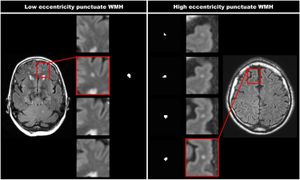The increasing concentration of plasma molecules is providing new hope for enhancing the biological activity of platelet-rich plasma (PRP), particularly for tissue regeneration. Recent research published by Sanchez and colleagues has introduced an innovative formulation referred to as ‘balanced protein-concentrate plasma’ (BPCP), which not only boosts the typical platelet concentration found in PRP but also enriches the plasma with beneficial growth factors and proteins.
Platelet-rich plasma, primarily composed of concentrated platelets derived from the patient’s blood, has gained traction as a regenerative treatment across various medical domains, especially orthopaedics and dermatology. While platelet components play several roles in tissue healing through the secretion of growth factors, recent studies suggest the importance of plasma-derived constituents as well. This research aims to explore the potential of BPCP and its capacity to provide enhanced therapeutic benefits.
The study's findings are significant: BPCP exhibits approximately double the total protein content and the levels of various growth factors compared to standard PRP (sPRP). The balanced formulation was shown to improve the viability of human dermal fibroblasts—a cell type central to wound healing and tissue regeneration—illustrated by a 1.41-fold increase compared to sPRP. This increased bioactivity indicates the potential for BPCP to accelerate healing processes more effectively than traditional approaches.
Another key aspect of the study is the reduced levels of pro-inflammatory cytokines, such as IL-1β, IL-6, and TNF-α, observed when cells were treated with BPCP. This anti-inflammatory effect may be particularly beneficial for conditions characterized by excessive inflammation, such as osteoarthritis, potentially leading to improved clinical outcomes.
Importantly, the study reveals no significant difference between BPCP and sPRP concerning the migration capacity of fibroblasts, highlighting the necessity of platelet presence for optimal migratory activity. Consequently, the traditional reliance on enhanced platelet counts alone may not fully address the therapeutic potential offered by the comprehensive nutrient profile provided by BPCP.
While the results are promising, Sanchez and the research team note the necessity for additional preclinical and clinical trials to validate the therapeutic efficacy of BPCP. Currently, many existing PRP methods overlook the extraplatelet content—the components outside the platelets—that could hold integral roles during tissue repair processes. This study aims to address such challenges by emphasizing both the cell-derived and plasma-derived molecules, aiming for a new equilibrium for effective tissue healing.
Considering the continued growth of interest and application of PRP therapies, findings from this work may significantly change clinical practices. They provide insights not only to researchers but also to clinicians aiming to explore new avenues for treating regenerative medicine patients. If supported by subsequent studies, BPCP might represent the next evolution of PRP treatment, merging traditional platelet roles with the powerful influence of plasma proteins, setting the stage for enhanced surgical interventions and recovery protocols. This innovative approach could pave the way for more effective regenerative therapies and improved patient outcomes.



